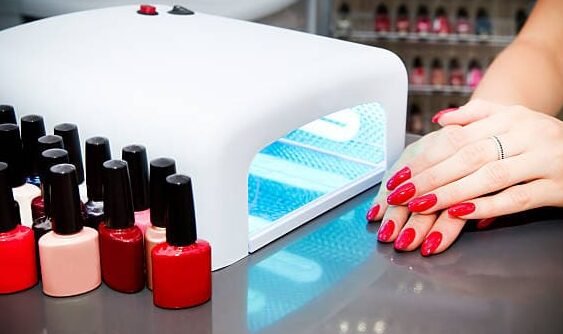WHAT ARE ACRYLIC NAILS?
Introduction
Acrylic nails, a popular form of artificial extensions, blend a liquid monomer with a powder polymer to create a robust and customizable material. Applied to natural nails or tips, they offer durability and aesthetic flexibility, allowing for creative expression with colors and designs. While admired for resilience, proper care, including regular maintenance and refills, is crucial to prevent issues like lifting or damage to the natural nail bed. Acrylic nails stand as both a practical choice for enduring extensions and a canvas for authentic self-expression in the realm of beauty and fashion.
THE GOOD ABOUT ACRYLIC NAILS
Acrylic nails, while popular, pose certain drawbacks. Improper application or removal can damage the natural nail bed, leading to thinning or weakening. The use of liquid monomer during application emits potentially harmful fumes, requiring adequate ventilation. Regular maintenance, including refills, is necessary, and neglecting issues like lifting can escalate problems. Removing acrylic nails can be challenging, often requiring professional assistance to prevent damage to natural nails. The thick appearance of acrylics and the potential for water or debris to get trapped between layers may impact aesthetics and increase the risk of infections. Additionally, some individuals may experience allergic reactions to the chemicals, causing discomfort and irritation.
How to Apply Acrylic Nails
Applying acrylic nails involves several steps. Begin by preparing natural nails, ensuring they are clean and trimmed. Apply a primer to enhance adhesion. Next, attach artificial tips or forms for extension. Mix liquid monomer and powder polymer to create a bead, then use a brush to apply and sculpt the acrylic mixture onto each nail, shaping it as desired. Allow it to air-dry and harden. Once set, refine the shape with a file and buff for a smooth finish. Complete the process by applying polish or nail art. Precision and practice are crucial for a successful application, and beginners may find professional guidance beneficial.
Cost of Acrylic Nails
The cost of acrylic nails can vary based on factors such as location, salon reputation, and additional services. On average, a full set of acrylic nails typically ranges from $30 to $60 in the United States. However, prices can be higher in metropolitan areas or salons with a strong reputation. Refills or maintenance appointments are usually less expensive, ranging from $20 to $40. Keep in mind that additional services like intricate nail art, special designs, or premium products may incur extra charges. DIY acrylic nail kits for at-home use can be a more cost-effective option, ranging from $15 to $40, but proficiency is essential for successful application.
WHICH TYPE OF NAIL IS MORE NATURAL-LOOKING: GEL OR ACRYLIC?
Achieving a natural-looking result depends on personal preferences and the expertise of the technician, but generally, gel nails are considered more natural-looking than acrylic. Gel nails have a glossy, transparent appearance that closely resembles the natural nail bed. They are thinner and more flexible than acrylics, providing a lightweight feel. Gel nails also tend to have a more natural shine and are less prone to yellowing. While both gel and acrylic can create a natural look when applied skillfully, many individuals opt for gel nails for their subtlety and ability to mimic the appearance of natural, healthy nails more convincingly.
ARE GEL NAILS MORE DURABLE THAN ACRYLIC NAILS
Both gel and acrylic nails are durable, but their resilience can depend on factors such as application technique and maintenance. Generally, acrylic nails are considered slightly more robust and less prone to chipping than gel nails. Acrylics are harder and withstand daily wear better, making them suitable for those with more hands-on lifestyles. Gel nails, while durable, are somewhat softer and may be more prone to chipping. However, advancements in gel technology continue to improve durability. Ultimately, the longevity of either type depends on proper application, maintenance, and individual lifestyle factors. Consulting with a skilled technician can help determine the best option for durability.
ARE GEL NAILS EASIER TO REMOVE THAN ACRYLIC NAILS?
Gel nails are generally considered easier to remove than acrylic nails. The removal process for gel nails involves soaking the nails in acetone to break down the gel, making it easier to lift and gently file off. This process typically takes less time compared to the removal of acrylic nails, which requires filing or drilling to break the bond between the acrylic and natural nail. While gel removal is more straightforward, it’s essential to follow proper techniques to minimize potential damage to the natural nails. Seeking professional assistance is recommended for a safe and effective removal process for both gel and acrylic nails.
WHICH IS MORE DAMAGING: GEL OR ACRYLIC NAILS?
The potential for damage in both gel and acrylic nails largely depends on the application and removal processes, as well as how well they are maintained. Generally, acrylic nails can be more damaging to the natural nail bed as they are harder and may require more filing during application and removal. Improper removal or infrequent maintenance can lead to issues such as thinning or weakening of the natural nails. Gel nails, while typically more flexible and considered gentler, can still cause damage if not applied or removed correctly. Seeking professional services and following recommended care guidelines can minimize the risk of damage for both types of nail enhancements.
How to Remove Acrylic Nails Without Damage at home?
Removing acrylic nails at home requires a careful process to minimize damage. Here’s a step-by-step guide:
- Gather Supplies:
- Acetone
- Cotton balls or pads
- Aluminum foil
- Nail file
- Cuticle oil or petroleum jelly
- Trim and File:
- Use nail clippers to trim down the length of the acrylic nails.
- Gently file the shiny surface to break the topcoat.
- Soak in Acetone:
- Soak cotton balls or pads in acetone.
- Place the soaked material on each nail.
- Wrap each fingertip with aluminum foil.
- Wait Patiently:
- Allow the nails to soak for about 15-20 minutes.
- Remove Acrylics:
- After soaking, gently use a cuticle pusher to lift the softened acrylic. Avoid excessive force.
- Moisturize:
- Wash hands and apply cuticle oil or petroleum jelly to nourish the nails and skin.
- File Residue:
- If any acrylic remains, use a gentle file to remove it.
- Take Breaks:
- If the process becomes uncomfortable, take breaks to avoid stress on the nails.
- Hydrate and Protect:
- Moisturize your hands and nails regularly after removal.
- Professional Help:
- If unsure or uncomfortable, consider seeking professional assistance.
This DIY approach, when executed patiently, can help remove acrylic nails at home with minimal damage to the natural nails.
How Long Do Acrylic Nails Last?
The longevity of acrylic nails varies based on factors like lifestyle and maintenance. On average, acrylic nails can last between two to three weeks before requiring a fill or maintenance. However, individual experiences may differ. Regular activities, exposure to water, and personal care practices impact their durability. To extend their lifespan, it’s essential to avoid harsh chemicals, regularly moisturize, and promptly address any issues like lifting or breakage. Professional application and routine upkeep contribute to a more prolonged and aesthetically pleasing wear of acrylic nails.
Conclusion
In conclusion, removing acrylic nails at home requires patience and care. Following a step-by-step process involving trimming, soaking, and gentle removal helps minimize damage to natural nails. Adequate hydration and occasional professional assistance contribute to maintaining healthy nails post-removal.
Frequently Asked Questions (FAQs)
What are the Pros and Cons of Acrylic Nails?
- How Do You Remove Acrylic Nails?
- What Type of Fake Nails Are Best?
- Which is More Expensive: Gel or Acrylic?
- Can I Remove Acrylics at Home?
- How Do You Remove Kiss Nails?















